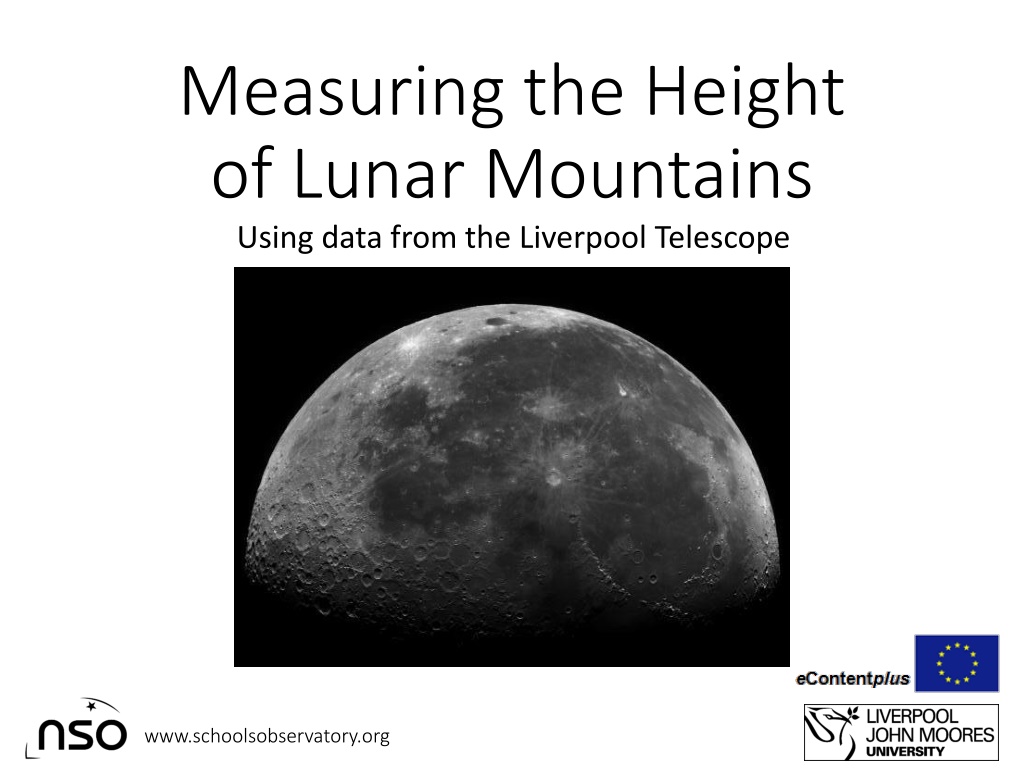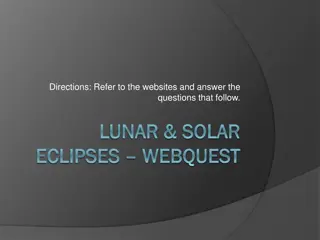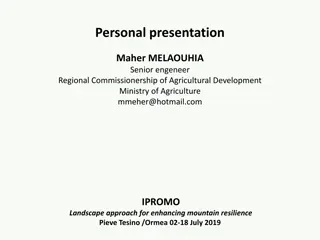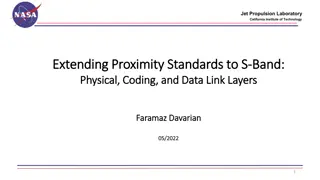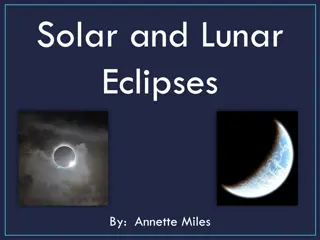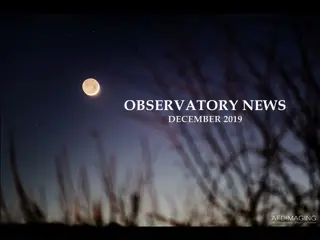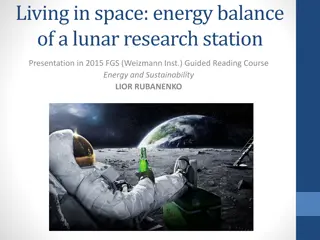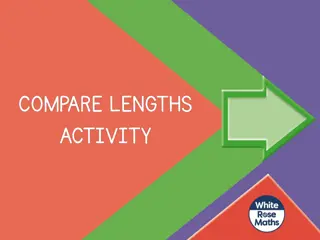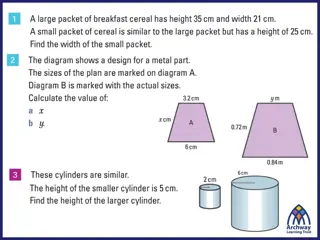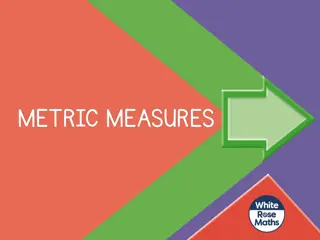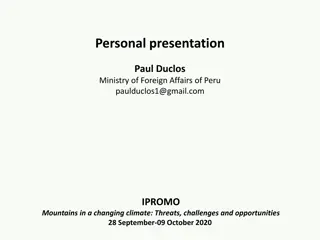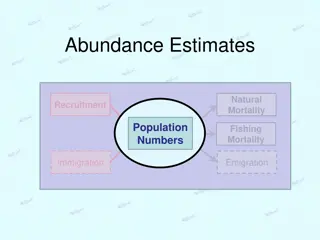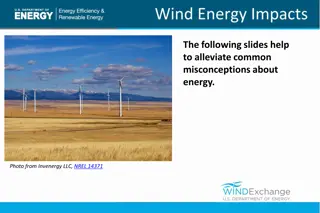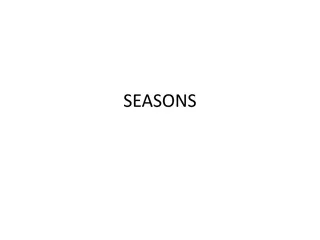Estimating Lunar Mountain Heights with Shadow Lengths
Explore how to estimate the height of lunar mountains by measuring the length of their shadows on the Moon's surface using data from the Liverpool Telescope. Discover the intriguing world of lunar shadows and how they can reveal information about celestial features. See how similar triangles and geometry play a crucial role in determining the height of mountains on both Earth and the Moon, providing an exciting opportunity to learn more about our closest celestial neighbor.
Download Presentation

Please find below an Image/Link to download the presentation.
The content on the website is provided AS IS for your information and personal use only. It may not be sold, licensed, or shared on other websites without obtaining consent from the author. Download presentation by click this link. If you encounter any issues during the download, it is possible that the publisher has removed the file from their server.
E N D
Presentation Transcript
Measuring the Height of Lunar Mountains Using data from the Liverpool Telescope www.schoolsobservatory.org
The Project We are going to estimating the height of a mountain on the Moon by measuring the length of the shadow it casts across the lunar surface. www.schoolsobservatory.org
Background The Moon is our nearest neighbour in space, and the only celestial body on which we can see surface detail without the need for a telescope. Look more closely, however, and it is soon apparent that the lunar surface is not smooth, but hosts a variety of dark and bright regions, mountain ranges and thousands upon thousands of craters. In this exercise we will examine image data of the Moon taken by the Liverpool Telescope, and use it to estimate the size of any lunar mountains we find. www.schoolsobservatory.org
Shadows on Earth If we measure the shadow length of an object of known height on Earth, we can use the information to estimate the height of a different object just by measuring its shadow. South The method relies on the Sun remaining at the same angle during both measurements, and the application of a bit of geometry, known as similar triangles . www.schoolsobservatory.org
Lunar Shadows When the phase of the Moon is full, the Sun is right behind us, and thus sunlight falls straight down onto the lunar surface. As a result, we do not see any shadows being cast by tall objects or crater walls. However, when the Moon is close to first quarter or last quarter phase, the angle at which sunlight falls onto features close to the terminator (the line between light and dark) means that shadows will be cast. www.schoolsobservatory.org
Prediction Given our existing knowledge, we might predict that lunar mountains are of a similar size to those found on Earth, i.e. somewhere between 1000 and 8000 metres. However, the mountains on Earth formed through active volcanism and tectonic plate activity both of which have not been seen on the Moon for billions of years. It is believed that mountains and craters on the Moon are the result of many asteroid impacts over millions of years this means they may not be as tall. On the other hand, however, it could be argued that the lack of atmospheric erosion and lower gravity may allow lunar mountains to be higher than on Earth. www.schoolsobservatory.org
The Geometry A Rough Calculation The red and blue (exaggerated) triangles can be treated as similar triangles because the top lines of each are parallel, and s (shadow length) is at right- angles to h (height). With small terminator distances (t) the distance between your shadow and the terminator line on the Moon s surface, r is effectively the lunar radius. s Sunlight h ?=? t ? r or (? ?) ? = where H will be the approximate height of the feature we measured. www.schoolsobservatory.org
Assembling the Moonsaic Now that we know the geometry, we need to assemble a large mosaic of the 20 Moon images so that we can find a few examples of lunar mountains to measure. The image data can be printed out and stuck together like a jigsaw puzzle. Note that each image overlaps slightly, which will help to match the edges and glue them securely. www.schoolsobservatory.org
Moonsaic Your finished mosaic should look like this when you re finished: Have fun! www.schoolsobservatory.org
Making your Measurements Once the moonsaic is complete, find a mountain near the centre of the Moon and fairly close to the terminator. We can now measure the distances of s (shadow length), t (distance to terminator) and r (radius of the Moon) using a ruler or tape measure. Write the values in a table and then calculate h. Measurement Value Shadow Length (s) (? ?) ? = Terminator Distance (t) Moon Radius (r) Mountain Height (h) Make sure you use the same units when measuring www.schoolsobservatory.org
Calibrating the Result We now need to calibrate the result, so that we can express the answer in terms of the actual height on the Moon (in kilometres). The way we do this is by using some simple algebra and by using the actual Radius of the Moon, R: Radius of Moon = 1738 km Now for the algebra: ???? ? ?? ????? ????????,? ?????? ?? ? ? ????,? ?? ?? =???? ? ?? ???????? ????????, ?????? ?? ???? ?? ??????,? (?? ??) www.schoolsobservatory.org
Always check your result So we finally have an answer but, as with all forms of research, we need to check whether the answer sounds reasonable. For example, it would be impossible to measure a height of 0.002 km (20m) on the lunar surface using the techniques described here, whereas 2000km would be greater than the Moon s radius so clearly not right. So . does your answer make sense? As a final check, the highest mountain on the visible side of the Moon is around 4700 metres (4.7 km). www.schoolsobservatory.org
Discussion Our initial prediction suggested that heights may be similar to mountains on Earth how does that fit with our results? Of course, the method we have just used will only ever give us a rough estimate of the true height of the mountains that we have measured. Can you think of any areas of the process where errors may have crept in? Can you think of any other ways in which we could measure the height of lunar mountains, whether it be from Earth, using a telescope, or with a spacecraft? www.schoolsobservatory.org
Extension: Now that you have measured a mountain or two on the lunar surface, you may want to investigate the depth of crater walls, or even see how surface features change in different parts of the Moon. You may want to explore the process whereby mountains are created in the centre of craters following an impact. Look at the Moonsaic again, and then try to work out whether it was taken at first or last quarter phase. Try to establish in which direction the Moon orbits the Earth. www.schoolsobservatory.org
